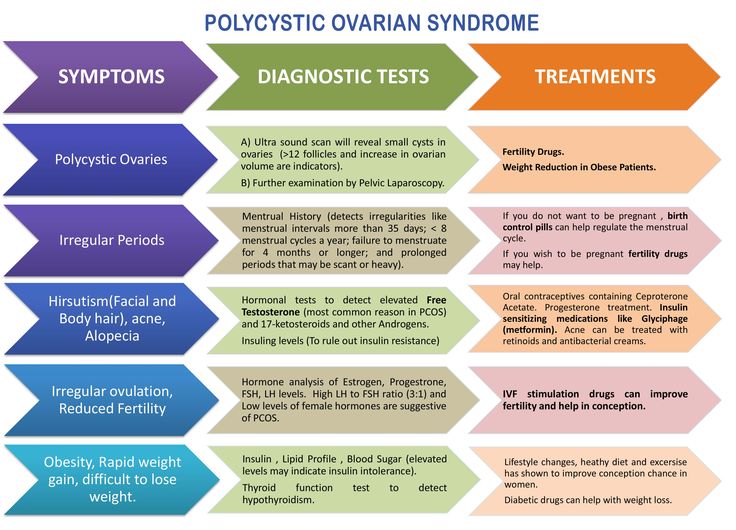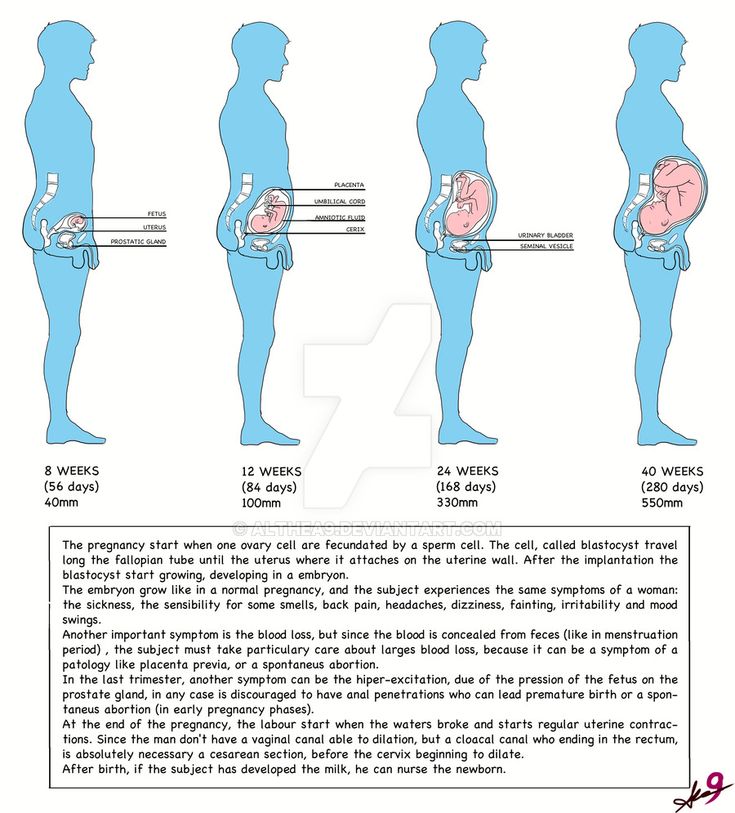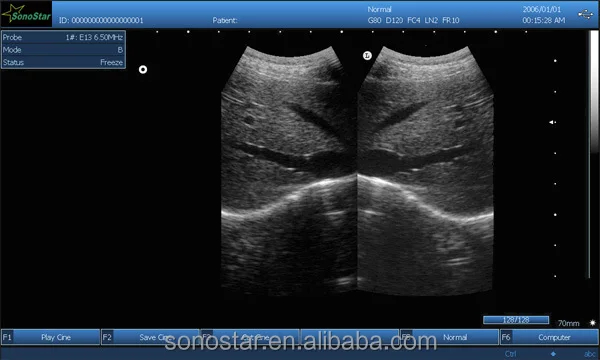Cystic ovaries and fertility
Ovarian Cysts: What They Mean for Your Fertility
Skip to contentPrevious Next
Ovarian Cysts: What They Mean for Your Fertility- View Larger Image
The female reproductive system is made up of many parts, each of which is necessary in order for us to give birth. That’s why it’s so important to check in with your OBGYN annually to make sure that nothing is amiss. Remember that health problems are much easier to catch and fix earlier on rather than once they’ve grown and affected other parts of the body.
Aside from giving birth, however, there is another good reason to check on your reproductive health – to keep the rest of your body healthy. Although you may not be planning on having children any time soon, your reproductive system is still there, and it can get sick. Since no part of your body lives independently, it’s easy to see how even tiny organs like ovaries can affect other parts of the body. For example, ovarian cysts can cause pain, rupture, or even indicate an underlying health condition. So yes, regular gynecological check-ups are always a good idea, even if you’re not attempting to have children at this exact moment.
Today we’ll go over the basics regarding ovarian cysts, a very common condition that affects females’ ovaries.
What Are Ovarian Cysts?Generally speaking, females have two ovaries – one located on either side of the uterus. Occasionally, however, a small pocket of fluid can grow inside or on the surface of an ovary. These sacks of fluid are called ovarian cysts. Ovarian cysts are an extremely common condition that affects millions of women in the US each year. Having said that, only about 8% of premenopausal women develop a cyst that needs treatment. That is because most ovarian cysts do not cause any symptoms and typically fade on their own over time.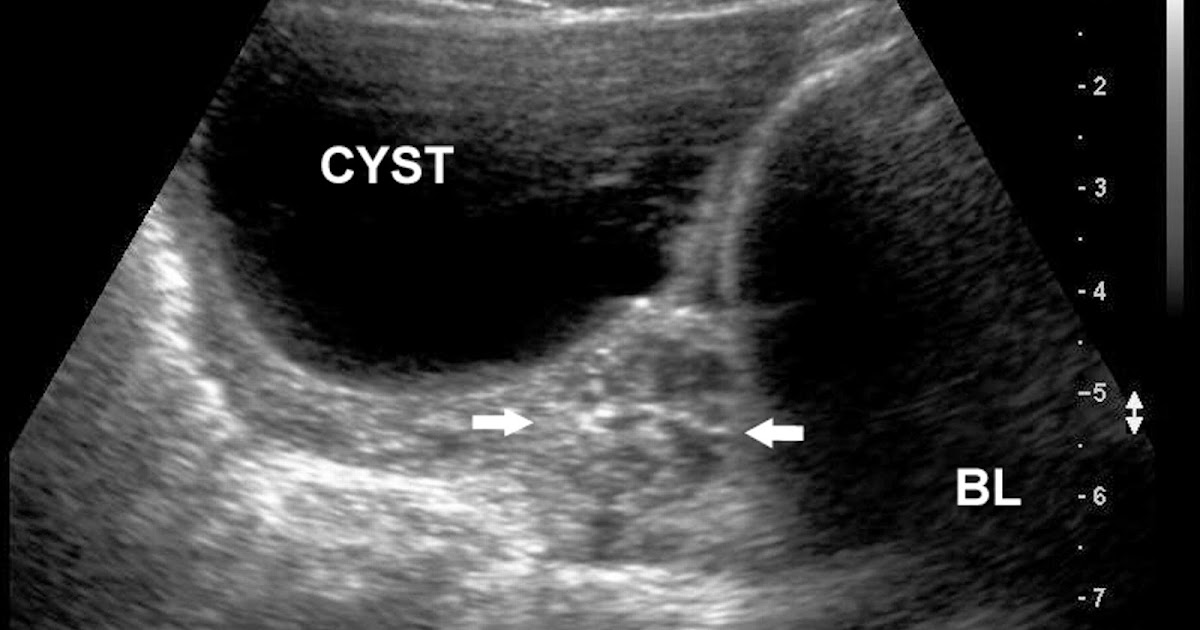
Ovarian Cyst Symptoms
As mentioned earlier, most ovarian cysts are minor enough that they don’t cause any discernible symptoms at all. Occasionally a cyst may result in uncomfortable symptoms, especially if the cyst is very large or has ruptured.
These symptoms may be:
- Pain or discomfort in the lower abdomen.
- An irregular period.
- Bloating in the abdomen.
- Pain or discomfort during bowel movements.
- Pelvic pain.
Very sharp, sudden pain can be an indication that an ovarian cyst has ruptured. Although unlikely, this does happen occasionally and you should always consult a medical professional if you suspect that your cyst has burst. Left unmonitored, a ruptured cyst can become infected. Another possible condition that may result from a cyst is ovarian torsion (i.e., a twisted ovary), which does require surgical treatment.
What Causes Ovarian Cysts?
Most ovarian cysts develop as a side product of your menstrual cycle.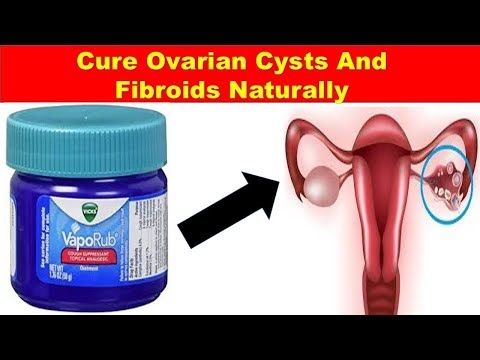 These cysts are fairly common and typically resolve themselves with little to no symptoms. Occasionally, however, ovarian cysts can appear due to other reasons.
These cysts are fairly common and typically resolve themselves with little to no symptoms. Occasionally, however, ovarian cysts can appear due to other reasons.
There are, however, a number of risk factors that can increase your chances of developing ovarian cysts.
These risk factors are:
- A hormonal imbalance or problem.
- Pregnancy
- Pelvic infections
- Endometriosis
Types Of Ovarian Cysts
There are a few different types of ovarian cysts that can occur. The main thing to know is that these cysts fall into two categories – functional cysts and other cysts. Functional cysts occur as a result of your menstrual cycle and typically fade on their own. Here are a few of the most common types of cysts:
- Follicular cyst – This falls into the category of “functional cysts” and occurs when a follicle continues to grow instead of releasing your monthly egg.

- Corpus luteum cyst – This cyst is also a “functional cyst” and occurs when your corpus luteum accumulates fluid inside of it.
- Dermoid cysts – These cysts are formed from embryonic cells and can contain hair, skin, or other tissue.
- Cystadenomas – Emerges on the surface of an ovary and may be filled with mucous.
- Endometriomas – These cysts are related to a condition called endometriosis. Endometriomas are a byproduct of this condition. Specifically, endometriomas occur when uterine endometrial cells form a growth on the outside of your ovaries.
Ovarian Cyst And Fertility
Fortunately, most ovarian cysts do not affect your fertility. The only cysts that are frequently accompanied by fertility problems are endometriomas. There are other related conditions, however, like PCOS, that may result in further fertility problems. Always consult your gynecologist or OBGYN if you notice or feel anything concerning.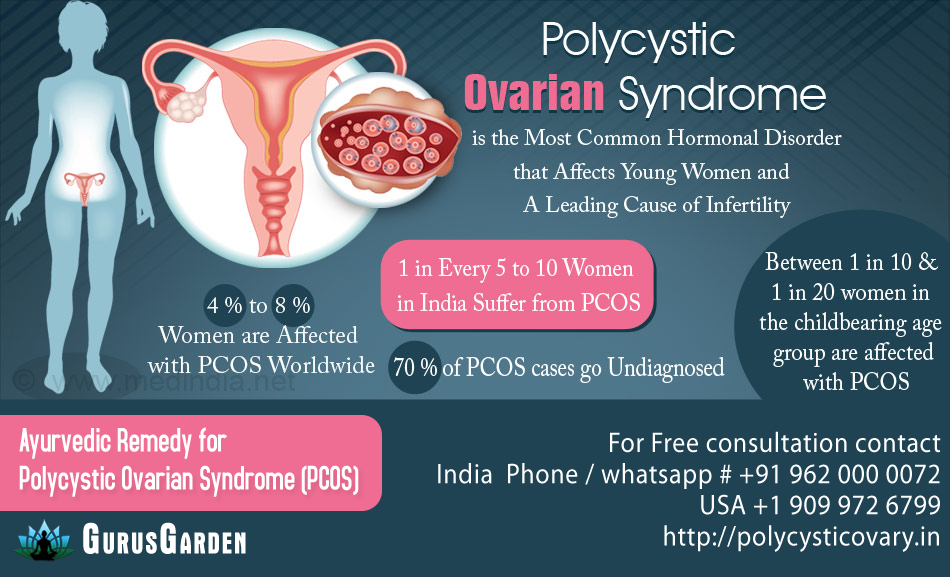 An OBGYN can examine you for cysts, discern what kind of cyst it is, and tell you whether or not it can affect fertility.
An OBGYN can examine you for cysts, discern what kind of cyst it is, and tell you whether or not it can affect fertility.
Ovarian Cyst Treatment
An ovarian cyst will often occur temporarily and resolve itself within a few months, resulting in little to no symptoms or side effects. Occasionally, however, a cyst may need intervention if it’s causing excessive discomfort.
Diagnosis
There are a variety of ways in which your OBGYN can diagnose an ovarian cyst and figure out what type it is. Common diagnostic procedures include a pelvic ultrasound, laparoscopy, pregnancy test, or a blood test.
Non-Invasive TreatmentAside from simply waiting to see whether the cyst fades on its own, a doctor may also recommend a course of hormonal contraceptives. Although birth control will not shrink an existing cyst, it can help prevent cysts from recurring.
Ovarian Cyst SurgeryIn the case that a cyst grows to be very large or does not begin shrinking after a few months, your doctor may recommend surgery. Laparoscopies and laparotomies are two commonly performed surgeries used to treat cysts.
Laparoscopies and laparotomies are two commonly performed surgeries used to treat cysts.
Common Questions
Here are some answers to common questions related to ovarian cysts.
What Does Ovarian Cyst Pain Feel Like?Although most ovarian cysts are asymptomatic, occasionally, they do result in pain or discomfort. This pain can be either sharp or dull, and will typically be felt in the lower abdominal area. The discomfort may worsen during your period when you’re producing more hormones. If the cyst bursts, you may also experience very sudden sharp pain.
Please Note: Always see a doctor if you experience sudden or severe pelvic/abdominal pain. Keep in mind that ovarian cysts are just one possible cause of pelvic pain. There are a variety of serious conditions that may emulate similar symptoms, so the best policy is always to consult a doctor if you notice anything off.
How To Shrink Ovarian Cysts Naturally?Your doctor may advise you to simply keep an eye on the cyst and give it time to resolve itself.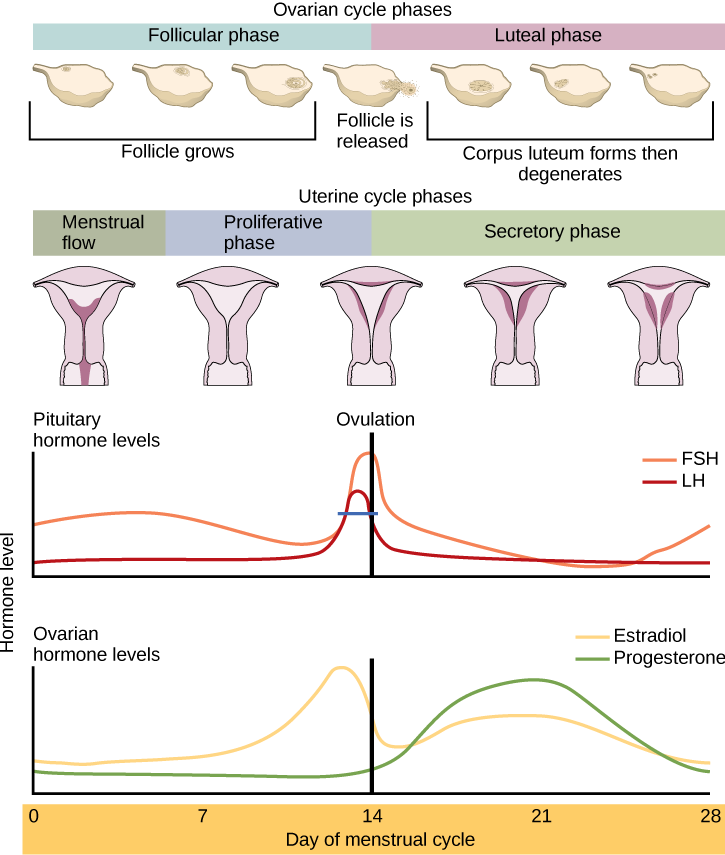 If you find yourself in this situation, please keep in mind that there is no way to shrink an ovarian cyst by using “home treatments.” Do not attempt to mix garlic and baking soda or make any other homemade medicines. These may harm your vaginal health and are not effective.
If you find yourself in this situation, please keep in mind that there is no way to shrink an ovarian cyst by using “home treatments.” Do not attempt to mix garlic and baking soda or make any other homemade medicines. These may harm your vaginal health and are not effective.
Having said that, you can alleviate some of the symptoms and manage the pain associated with a cyst. Over-the-counter medication, gentle massaging, light exercise, and heating pads are good ways to alleviate light discomfort.
Remember to always consult with your doctor. However, they may recommend a specific course of treatments for the cyst.
Can Ovarian Cyst Cause Infertility?As we mentioned earlier, most ovarian cysts do not cause infertility. In fact, functional cysts typically have no effect on your physical health whatsoever. Having said that, occasionally, some cysts can turn out to be endometriomas. These types of cysts do impact fertility, and you should always talk to an OBGYN specialist if you suffer from this type of cyst.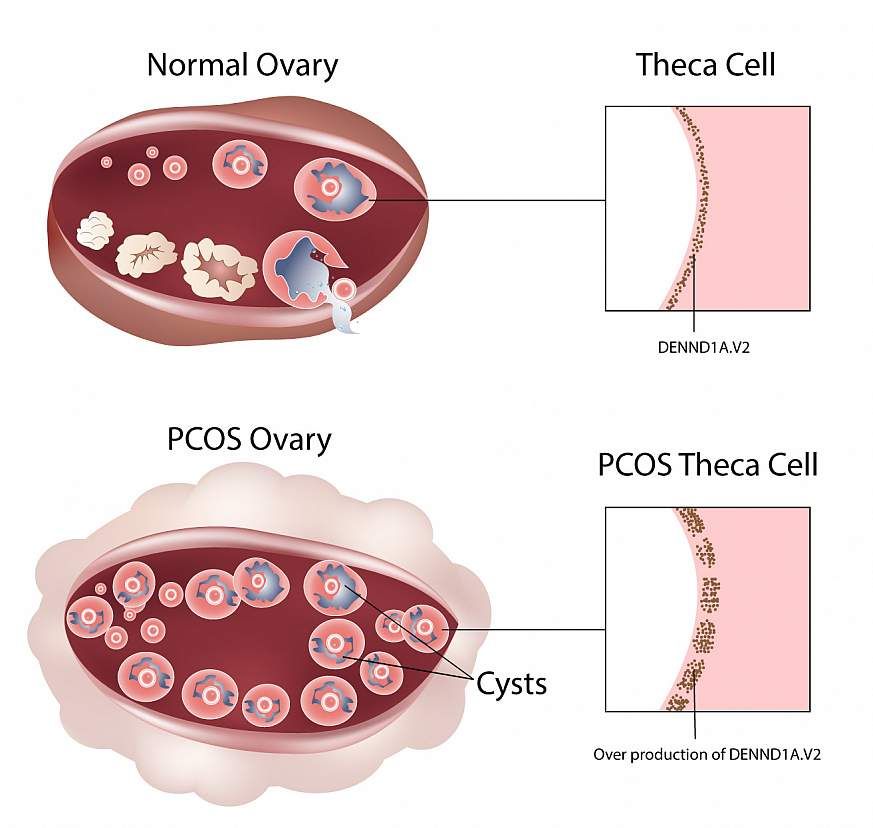
Cool Springs OBGYN
Here at Cool Springs Obstetrics & Gynecology, we’ve been providing women’s healthcare services for over 20 years. We offer not only a high quality of medical care, but a genuine shoulder for our patients to lean on. That means that we treat everyone that comes through our door like they are family and support them through thick and thin. We are proud to call ourselves a cornerstone of women’s health in the Tennessee area and hope that you’ll give us a try. Whether you live in Brentwood, Nashville, or Franklin, TN, we can be the OBGYN for you.
Our practice offers a variety of gynecological services- including routine exams, preventative care, and treatment for an array of conditions.
So if you feel any pelvic or abdominal pain, don’t hesitate to reach out. Our specialists will be able to diagnose the problem and recommend a course of treatment. Call or visit our website here to make an appointment today.
Page load linkGo to Top
How do ovarian cysts affect fertility?
Two types of cysts are common byproducts of ovulation:
- Follicular cysts form when, instead of breaking open to release the egg, the follicle stays intact and the cyst continues to grow.

- Corpus luteum cysts, or luteal cysts, sometimes form after ovulation. Normally, once the egg has broken free, the follicle shrinks into a mass of cells known as the corpus luteum, which produces hormones to prepare for the next cycle. Luteal cysts form when, instead of shrinking, the follicle reseals itself and fluid builds up inside.
Both of these cysts are typically harmless and disappear within 1–3 months without treatment. And for pregnant women, corpus luteum cysts are actually super important: they produce progesterone, a hormone that’s essential for the first 8–10 weeks of pregnancy.
Which ovarian cysts affect fertility, and how?
There are a few types of cysts associated with lower fertility. How do ovarian cysts affect fertility? In actuality, it’s not these cysts themselves that make it harder to get pregnant—they are simply symptoms of larger illnesses that may compromise fertility.
Endometriosis is one example of an illness that can cause ovarian cysts that affects fertility.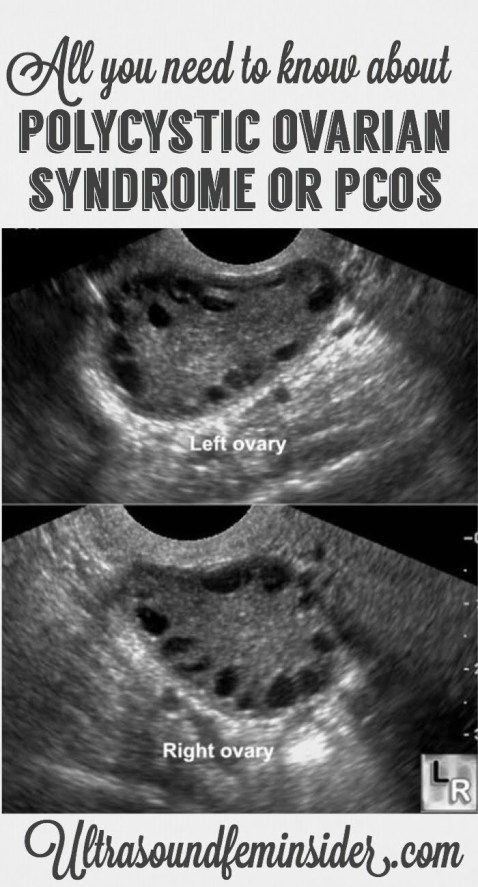 Endometriosis occurs when endometrial tissue—the lining of the uterus—begins to grow in other places, like on the outside of the uterus or the fallopian tubes. One result of endometriosis is ovarian cysts known as “endometriomas,” formed when this tissue grows in the ovaries. Endometriomas can range in size from less than an inch to over 6 inches, and are often filled with dark blood.
Endometriosis occurs when endometrial tissue—the lining of the uterus—begins to grow in other places, like on the outside of the uterus or the fallopian tubes. One result of endometriosis is ovarian cysts known as “endometriomas,” formed when this tissue grows in the ovaries. Endometriomas can range in size from less than an inch to over 6 inches, and are often filled with dark blood.
While doctors aren’t 100% sure how these ovarian cysts affect fertility, they do know that endometriosis is closely tied to infertility; some studies demonstrate that women with even mild cases of endometriosis have only a 2–4% chance of getting pregnant each month (compared to the 15–20% chance healthy women have). Dr. Iris Orbuch, OB/GYN and endometriosis specialist, estimates that “40% of unexplained infertility is due to endometriosis,” which both “decreases a woman’s ovarian reserve [and] decreases fertility by either an anatomical distortion or via inflammation.”
Learn more about endometriosis.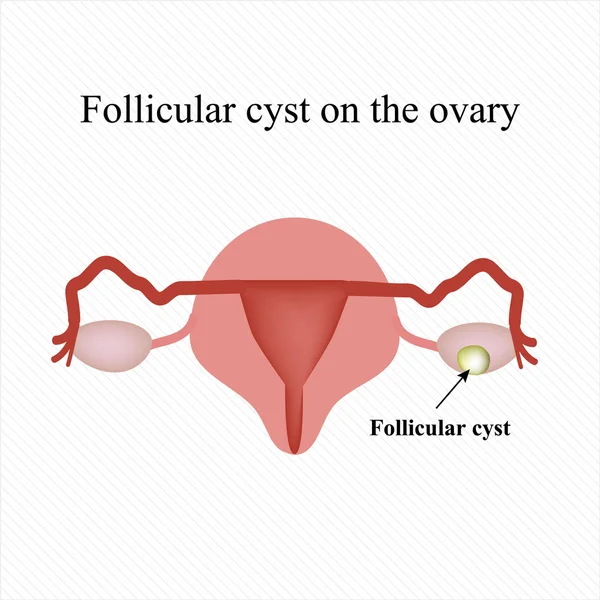
Secondly, polycystic ovary syndrome (PCOS), a hormone imbalance that causes many tiny ovarian cysts, affects fertility by a higher rate than almost any other condition (besides age). In PCOS, the eggs that begin to develop during the ovulation cycle never mature enough to prompt ovulation, so none of them are released from the ovary. The immature follicles, each containing an immature egg, then cause the ovary to become “polycystic,” filled with these tiny cysts.
The chronic lack of ovulation alters the levels of hormones that play an important role in the ovulation process, and PCOS is often associated with higher levels of male hormones known as “androgens.” It’s not the ovarian cysts themselves that affect fertility in cases of PCOS—it’s the fact that women with PCOS don’t ovulate, and ovulation is essential for getting pregnant naturally.
Can ovarian cysts have other side effects?
While it’s not typical for ovarian cysts to affect fertility, larger or multiple cysts can have other side effects or symptoms, such as bloating, needing to urinate more often, pelvic pressure or pain, or abnormal vaginal bleeding.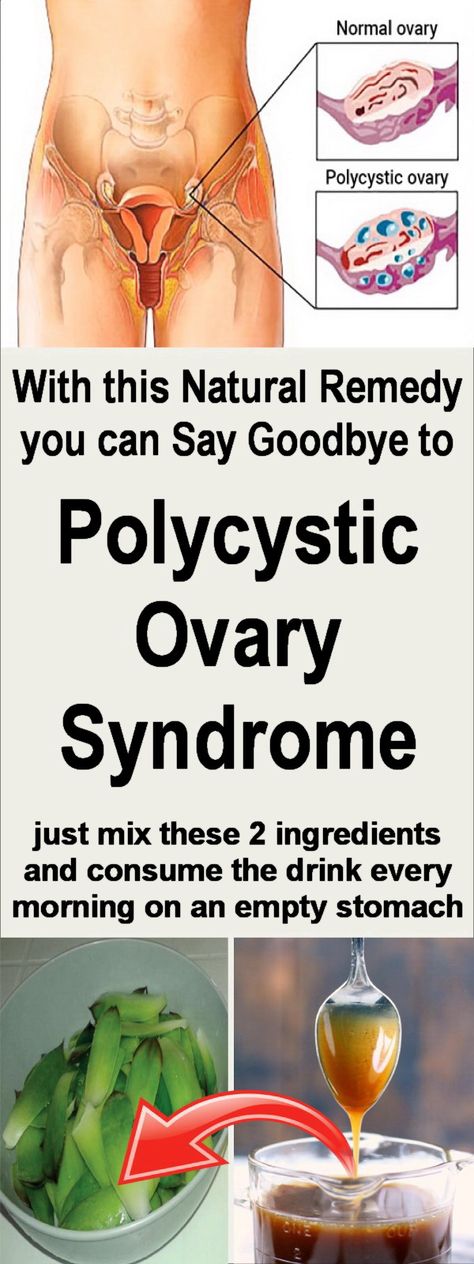 If your cyst(s) doesn’t go away on its own after a few months, continues to grow, or causes you pain, your doctor might recommend surgery to remove it. With larger ovarian cysts, there is the concern for a rare condition of twisting of the ovary, called ovarian torsion, which—if not corrected promptly with surgery—can lead to loss of an ovary. Alternative treatments for benign cysts include hormonal birth control—such as the pill, vaginal ring, shot, or patch—which prevent ovulation and lower your chances of getting more cysts. Malignant (cancerous) cysts are very rare in young women.
If your cyst(s) doesn’t go away on its own after a few months, continues to grow, or causes you pain, your doctor might recommend surgery to remove it. With larger ovarian cysts, there is the concern for a rare condition of twisting of the ovary, called ovarian torsion, which—if not corrected promptly with surgery—can lead to loss of an ovary. Alternative treatments for benign cysts include hormonal birth control—such as the pill, vaginal ring, shot, or patch—which prevent ovulation and lower your chances of getting more cysts. Malignant (cancerous) cysts are very rare in young women.
Can treatment for ovarian cysts affect fertility?
That depends on the treatment. Hormonal birth control doesn’t have a long-term effect on fertility (learn more about birth control and fertility). Surgery almost invariably damages some healthy eggs, and complications can (rarely, but sometimes) mean doctors need to remove an entire ovary. Both situations result in a lower egg count, which is one factor in fertility.
Should women with ovarian cysts freeze their eggs?
While not all ovarian cysts affect fertility by way of reproductive illness, there are cases in which a woman may want to consider egg freezing to preserve fertility.
Women with endometriosis who aren’t yet ready to get pregnant are excellent candidates for egg freezing. During endometriosis, the abnormally growing endometrial tissue can cause inflammation, scarring, cysts, and organ damage, including damage to the ovary. And if the ovary is damaged, it can mean impaired egg production or ovulation—or none at all.
Additionally, while surgical treatment of endometriosis offers long-term pain relief, studies show that it may actually reduce ovarian reserve (and therefore fertility) by inadvertently removing healthy ovarian tissue or cutting off blood supply to the ovary. Freezing eggs before endometriosis progresses too far is the best way to preserve fertility options for later in life.
And surgical treatment of other ovarian cysts affects fertility by damaging healthy eggs.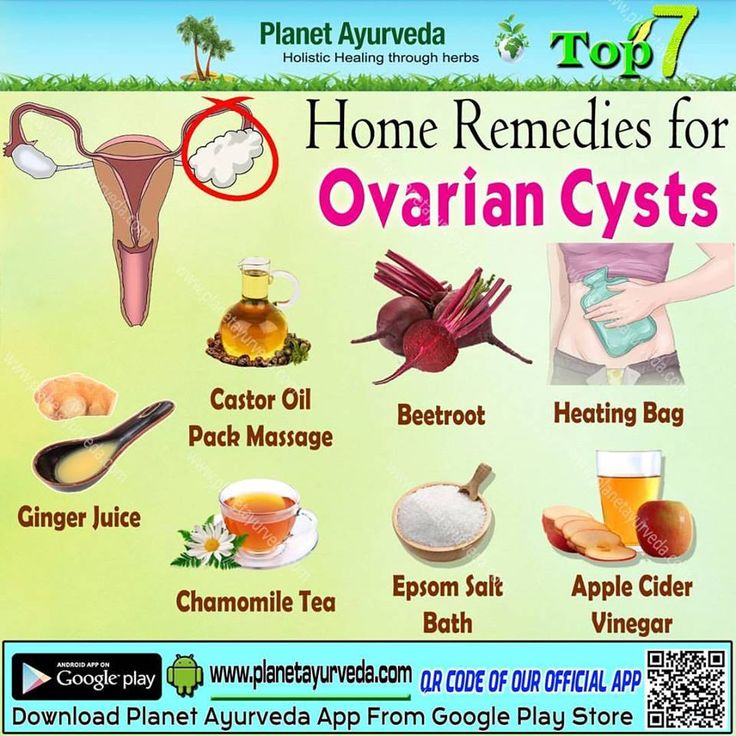 Women who have had ovarian cysts surgically removed will typically have a lower egg count. For that reason, women who are considering surgery for ovarian cysts should also consider freezing their eggs—prior to the surgery, if possible, or after the removal of the cyst, if the size or location of the cyst will make egg freezing too risky or complicated.
Women who have had ovarian cysts surgically removed will typically have a lower egg count. For that reason, women who are considering surgery for ovarian cysts should also consider freezing their eggs—prior to the surgery, if possible, or after the removal of the cyst, if the size or location of the cyst will make egg freezing too risky or complicated.
Learn more about how ovarian cysts affect fertility—and how egg freezing can help:
Contact our healthcare team
ovarian cysts - causes and treatment of formation
An ovarian cyst is a fluid-filled ovarian follicle. This is a common pathology of the ovaries, which can be benign or malignant. Cysts are usually spontaneously reabsorbed, however, in some cases, if it does not disappear, patients require hormonal or surgical treatment.
Causes of an ovarian cyst
One or more cysts may develop in one of the ovaries, and may also develop in one or both ovaries. Cysts usually result from hormonal disorders ; During the menstrual cycle, Graf's follicle is formed, and when it ruptures, the egg is released.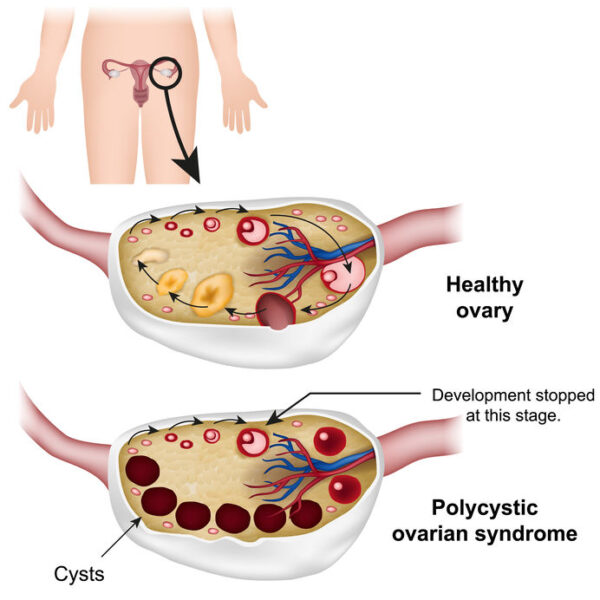 In the event that the follicle does not burst, it can continue to grow and fill with fluid. These cysts are directly related to the functioning of the ovaries and the menstrual cycle, they are also called functional cysts . Conditions that increase the likelihood of cysts include PCOS, the so-called polycystic ovary syndrome, and endometriosis. nine0003
In the event that the follicle does not burst, it can continue to grow and fill with fluid. These cysts are directly related to the functioning of the ovaries and the menstrual cycle, they are also called functional cysts . Conditions that increase the likelihood of cysts include PCOS, the so-called polycystic ovary syndrome, and endometriosis. nine0003
Types of ovarian cysts
Depending on the cause of the formation of ovarian cysts, they are divided into several types:
- Endometrioma or endometriosis cyst - occurs as a result of endometriosis;
- Dermoid cyst or teratoma - derived from embryonic tissue; it may contain adipose tissue, hair, bodies, fragments of bone and cartilage.
- Follicular cyst - occurs when there is no ovulation, Graf's follicle does not burst and continues to grow. nine0020
- Yellow body cyst - occurs when ovulation has occurred, but fluid continues to accumulate inside the follicle.

- Luteal cyst - formed during pregnancy due to high levels of the hCG hormone.
- Cystadenomas are benign. Make an appointment .
Do you have questions? Contact us!
Symptoms of an ovarian cyst
As a rule, ovarian cysts do not cause any symptoms at first, as they are small and do not interfere with the functioning of the reproductive system. Cysts are most often diagnosed when the cyst reaches a large size, and the woman feels significant discomfort. nine0003
The most common symptoms of an ovarian cyst are:
- infertility: cycle changes,
- problems with urination,
- burning and uneven pain in the lower abdomen,
- pain during intercourse,
- nausea and vomiting, 902 leading to an increase in the circumference of the abdomen;
- discharge between periods,
- abrupt weight changes,
- pain in the ovarian region,
- headache, nervousness, fainting.
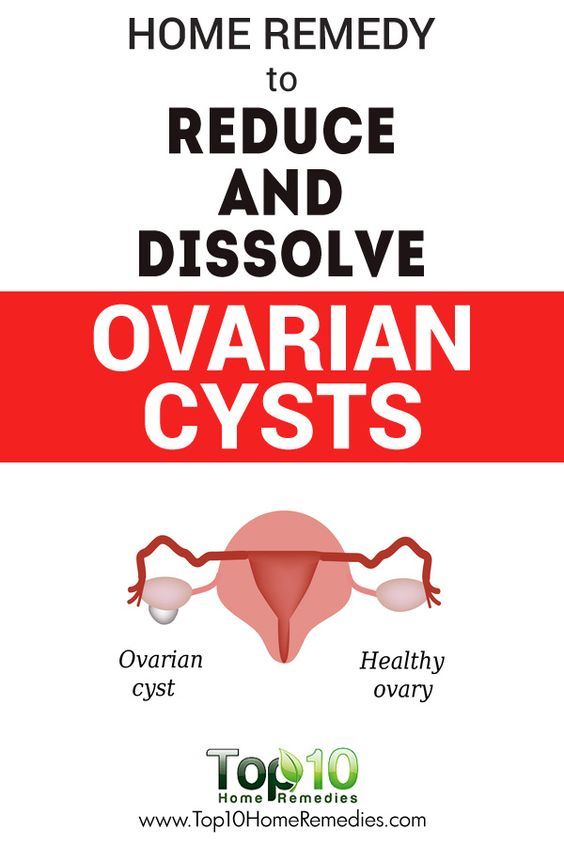 nine0020
nine0020
Complications of ovarian cysts - torsion or rupture
The biggest complication that can occur with benign cysts is their torsion or rupture. A normal ovary or an ovary with small cysts is freely moving. If the cyst is large, it is possible that the ovary may turn over, squeezing the blood vessels, as a result of which the ovary ceases to be supplied with blood and necrosis or death of ovarian tissue begins. Large cysts may burst on their own or as a result of trauma. In this case, the contents of the ovarian cyst seeps into the abdominal cavity, and there is also a risk of bleeding. The most common symptoms of these complications are sudden pain in the lower abdomen, vomiting, and feeling unwell. If you experience these symptoms, it is important to see your doctor immediately. nine0003
Diagnosis of an ovarian cyst
Medical history and gynecological examinations, which are also carried out by the fertility clinic, are crucial for the diagnosis of a cyst.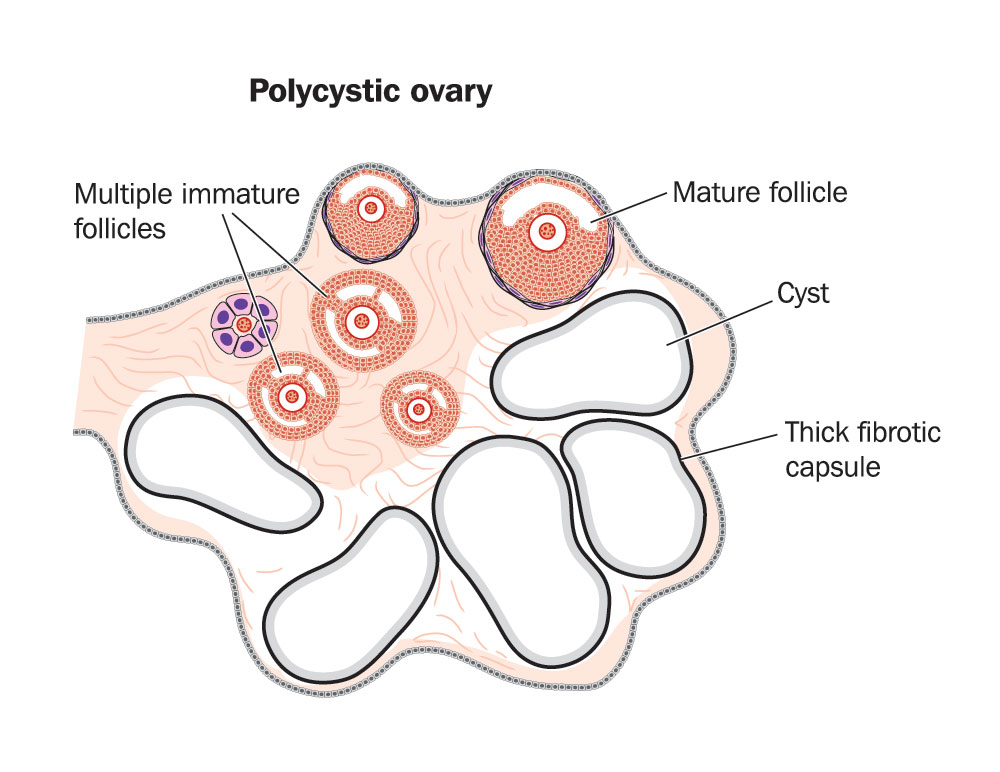 To confirm the presence of a cyst, Doctor performs Ultrasound , which can assess the type, size, shape, wall thickness, vascularity, and possible hazards it poses. Sometimes a biopsy of the cyst is performed to empty its contents and, if necessary, make further cytological diagnosis . When diagnosing a tumor, tumor markers are also determined. In a situation where the cyst is malignant, the patient is referred for further, detailed examinations.
To confirm the presence of a cyst, Doctor performs Ultrasound , which can assess the type, size, shape, wall thickness, vascularity, and possible hazards it poses. Sometimes a biopsy of the cyst is performed to empty its contents and, if necessary, make further cytological diagnosis . When diagnosing a tumor, tumor markers are also determined. In a situation where the cyst is malignant, the patient is referred for further, detailed examinations.
How are ovarian cysts treated?
The treatment of a cyst depends on many factors. In most cases, only observations are sufficient. Cysts that are directly related to ovarian function usually do not require further intervention, as most often they disappear spontaneously or with hormonal treatment, which sometimes lasts several months. nine0007 Pharmacotherapy is used to absorb or at least shrink the cyst. Unfortunately, it happens that the cyst does not decrease and endangers the health of the patient.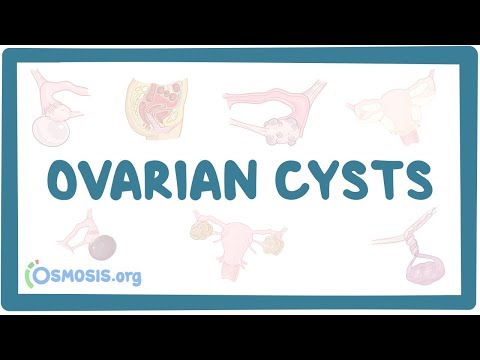 In such cases, an operative procedure may be required. The operation to remove the cyst is performed by the classical or laparoscopic method. Laparoscopy is definitely less risky, it is a minimally invasive procedure. The procedure will depend on the type of cyst and the health of the patient.
In such cases, an operative procedure may be required. The operation to remove the cyst is performed by the classical or laparoscopic method. Laparoscopy is definitely less risky, it is a minimally invasive procedure. The procedure will depend on the type of cyst and the health of the patient.
Luteal cysts that develop during pregnancy should only be surgically removed if there are complications, such as if the cyst is twisted or threatened to burst. nine0008 If the cyst is small, surgery is not always required as the body can only absorb a small amount of fluid. However, sometimes the cyst is too large, and thus it can cause damage to the tissues of the ovaries. If damage to the ovarian tissue has occurred, the ovary may need to be removed. If the second ovary is working properly, the woman's fertility is maintained.
Unfortunately, there is no way to prevent the formation of cysts. Regular check-ups and appropriate treatment for diseases such as PCOS or endometriosis are the best way to detect cysts early. nine0003
nine0003
In the treatment of malignant tumors, the most important thing is time, the earlier the changes are diagnosed, the greater the chances of successful therapy.
Ovarian cysts during pregnancy
During pregnancy, cysts are most often detected during ultrasound. They generally do not threaten normal fetal development, but should be monitored for risk of rupture or torsion. These complications can lead to premature birth or abortion. The tendency to form a cyst is not hereditary, but the factors that cause it, such as hormonal disorders, are often passed down from generation to generation. nine0003
how to detect and can it be cured?
What is a cyst?
Ovarian cyst is a neoplasm with liquid contents , a kind of bubble with "water". Cysts are divided into functional and real (true).
The first appear due to a malfunction of the hormones.
The day of the beginning of menstruation is the starting point of a new cycle.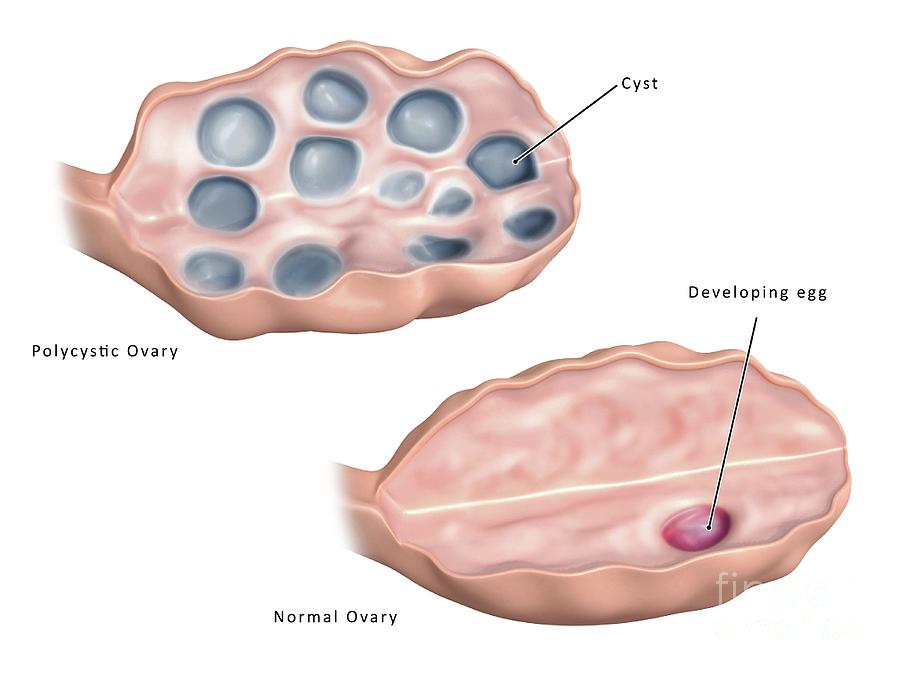 At this time, a follicle is formed in the ovary, which bursts by the middle of the cycle, releasing a mature egg. Ovulation occurs. nine0117 If the follicle does not burst or even continues to increase in size, one of the functional cysts appears - follicular.
At this time, a follicle is formed in the ovary, which bursts by the middle of the cycle, releasing a mature egg. Ovulation occurs. nine0117 If the follicle does not burst or even continues to increase in size, one of the functional cysts appears - follicular.
Normally, a corpus luteum (from the Latin "corpus luteum") is formed at the site of a ruptured follicle. Its task is to produce progesterone, which will be especially needed if the egg is fertilized by the sperm and pregnancy occurs. If this does not happen, then the corpus luteum gradually disappears. If the corpus luteum has not gone away, and even began to grow, accumulating fluid, we can talk about the emergence of another functional cyst - luteal (the name comes from the phase of the cycle when the cyst formed). nine0118
A complicated version of a functional cyst is the case when blood accumulates inside it due to broken blood vessels. Such a cyst is called hemorrhagic .
True cysts include teratomas, cystadenomas and endometriomas. The reasons for the appearance of all three are not completely clear - genetics plays a big role.
So, teratoma is a congenital benign tumor, but it grows and develops very slowly. Interestingly, inside it are the so-called undifferentiated tissues of the body - hair, fat, teeth, etc. nine0003
Cystadenomas - something like a functional cyst - inside with fluid or mucus. With such a cyst, you should be very careful, because cystadenomas often reach quite large sizes and have increased oncological risks.
The most unpleasant cyst is endometrioma . It is associated with endometriosis - a situation when one of the layers of the uterus (the outer lining of the uterine cavity) for some reason "goes" beyond its limits and settles in another place - for example, the fallopian tubes or, in the case of endometrioma - in the ovary. Regardless of the location, the tissues of the uterus retain their properties - for example, they bleed once a month when menstruation occurs.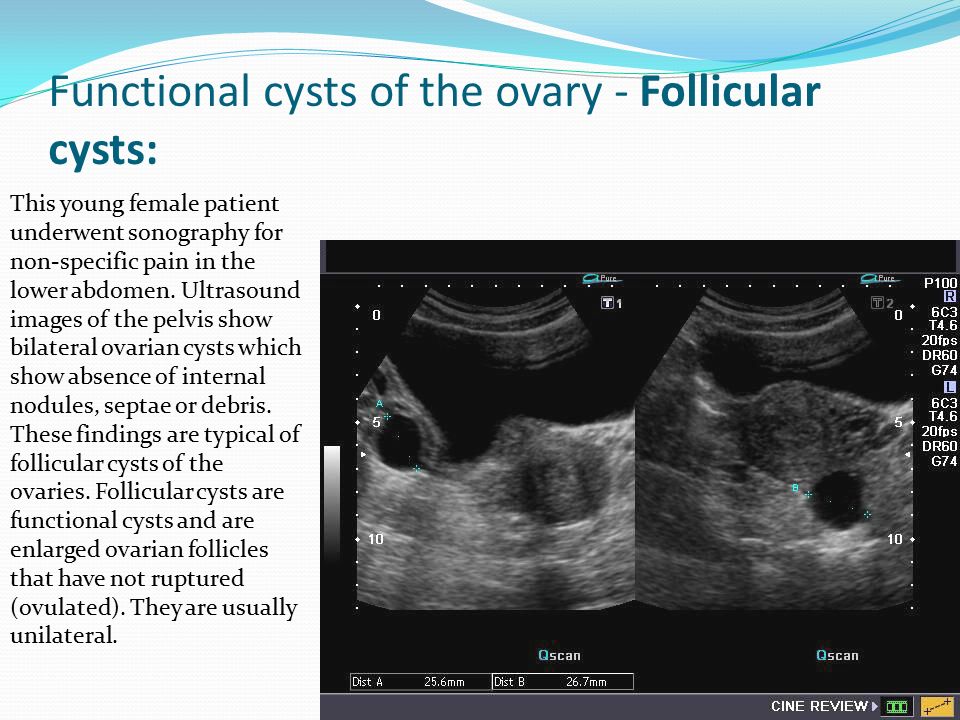 And since the ovary is not the right place for this, chronic inflammation forms in it. This, in turn, provokes the appearance of adhesions - special "threads" of connective tissues, which, as it were, "glue" the ovaries with the surrounding tissues and provoke the appearance of unpleasant symptoms. nine0003
And since the ovary is not the right place for this, chronic inflammation forms in it. This, in turn, provokes the appearance of adhesions - special "threads" of connective tissues, which, as it were, "glue" the ovaries with the surrounding tissues and provoke the appearance of unpleasant symptoms. nine0003
What are the possible symptoms?
In general, the symptoms of a cyst do not depend on its type, but on its size. Small masses (2-4 cm) such as functional cysts, teratoma or cystadenoma may be asymptomatic .
If the cyst continues to grow, it can cause:
- Drawing pains, feeling of heaviness in the lower abdomen,
- Pain during intercourse,
- Delayed menses. nine0043
In the case of endometrioma, one of the additional symptoms is infertility due to the chronic inflammation and adhesions associated with this type of cyst. And it is she who most often causes atypical severe pain before and during menstruation.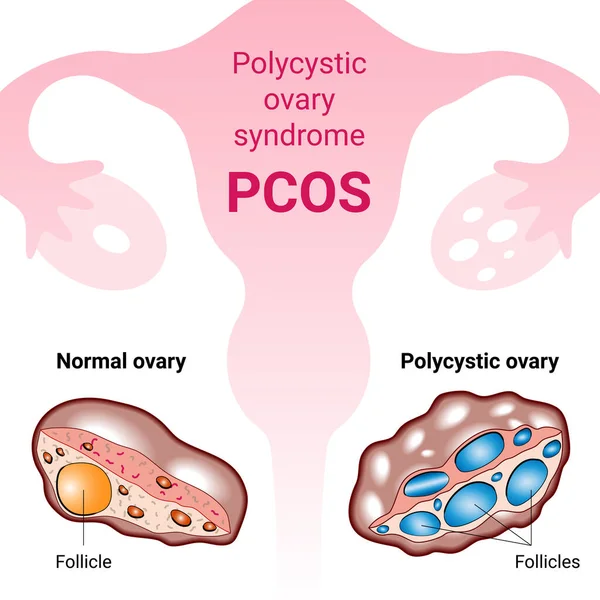
The most common complication is cyst rupture . Most often this occurs in the case of a functional hemorrhagic cyst in the middle of the menstrual cycle, especially after exercise or sexual contact.
Small cysts rarely rupture, and even if they rupture, no further action is required. A large cyst can cause serious trouble, therefore, if the patient feels sharp severe pain on one side of the abdomen, an urgent need to consult a doctor. nine0003
Another complication is that due to the severity of the cyst, the ovary may become twisted. The blood supply is blocked, the ovary becomes inflamed, the tissues begin to die and cause very severe sharp pains, nausea, vomiting, rapid pulse. This is also an acute situation that requires immediate surgery.
How to diagnose a cyst?
Since most of the cysts are small and do not cause any complaints - it is very important to see a gynecologist for examination and preventive ultrasonography.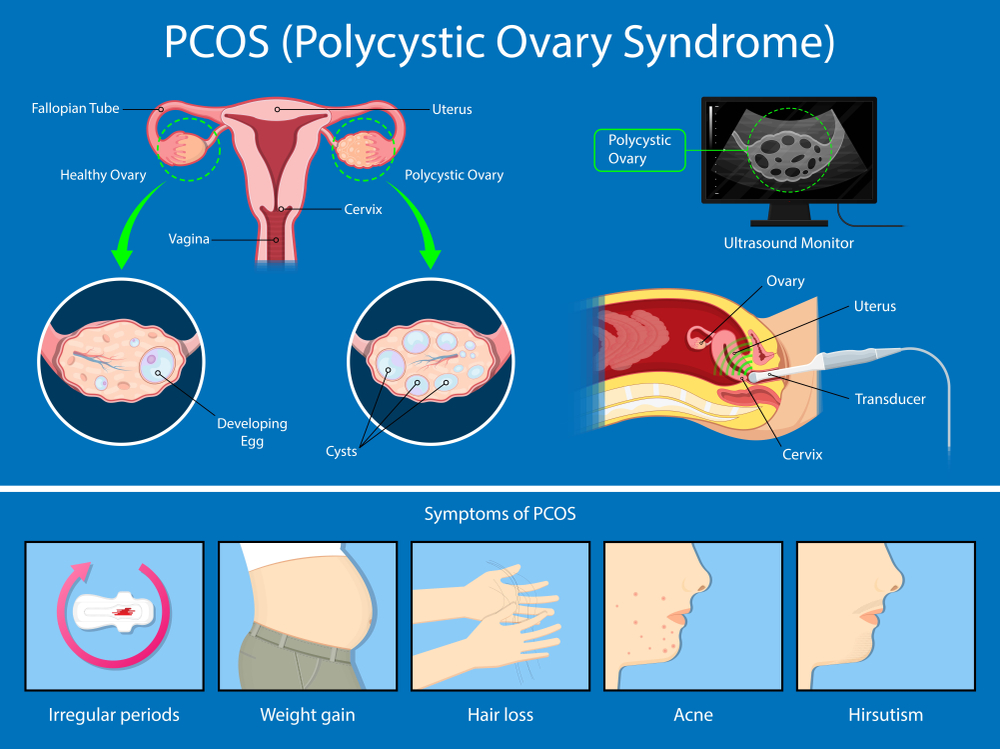 nine0118
nine0118
Ultrasound is the main diagnostic method. It is he who helps to determine the size of the cyst, its type and plan further tactics of behavior.
If the cyst looks “suspicious” on ultrasound, then an additional blood test will be prescribed for the so-called onco-markers - CA-125, HE-4, CEA. It is important to evaluate several markers at once, because, for example, CA-125 can give a false positive result - for example, with endometriosis, fibroids, liver diseases, etc.
If cancer is suspected, a CT scan or magnetic resonance imaging may be needed to check nearby organs and lymph nodes. nine0003
How to treat a cyst?
The main question here is in what cases it is worth doing it. If it is a small, unequivocally benign cyst (up to 4 cm) that does not cause any symptoms, then it is better to choose observational tactics. For example, functional follicular cysts usually go away on their own within 3-6 months. Teratomas, endometriomas and cystadenomas, if they are small, it is also better not to touch them - surgery is an extra trauma to the ovary.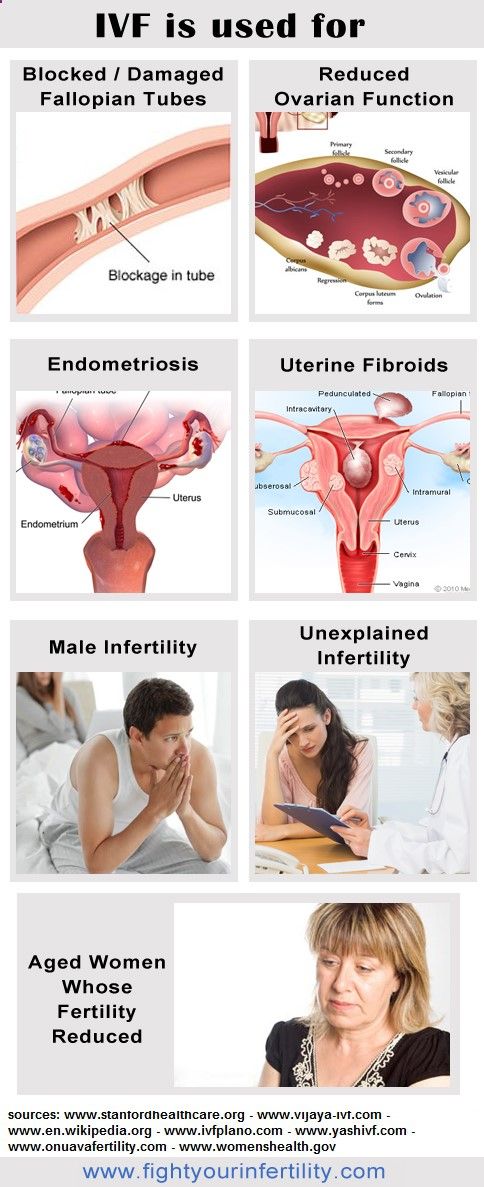 nine0003
nine0003
If the cyst does not disappear by itself - you can try to speed up this process with hormonal contraception - prescribe drugs for 3 months to "turn off" the ovaries from the chain of the hormonal system for a while and let the cyst disappear. The doctor can choose this option for a hormone-dependent cyst: follicular and luteal. Hormonal contraception can be combined with pain therapy to relieve symptoms.
But, in the case of a large cyst that causes complaints or if there is a suspicion of malignancy of the formation, of course, it is necessary to act. And the only option is surgery. The main task of such treatment is to remove the cyst, minimally injuring the ovary. nine0117 In 95 % cases, laparoscopy is performed, in which 3-4 small incisions (no more than a centimeter in diameter) are made in the patient's anterior abdominal wall under anesthesia. Through these incisions, a camera and instruments are inserted into the abdominal cavity.